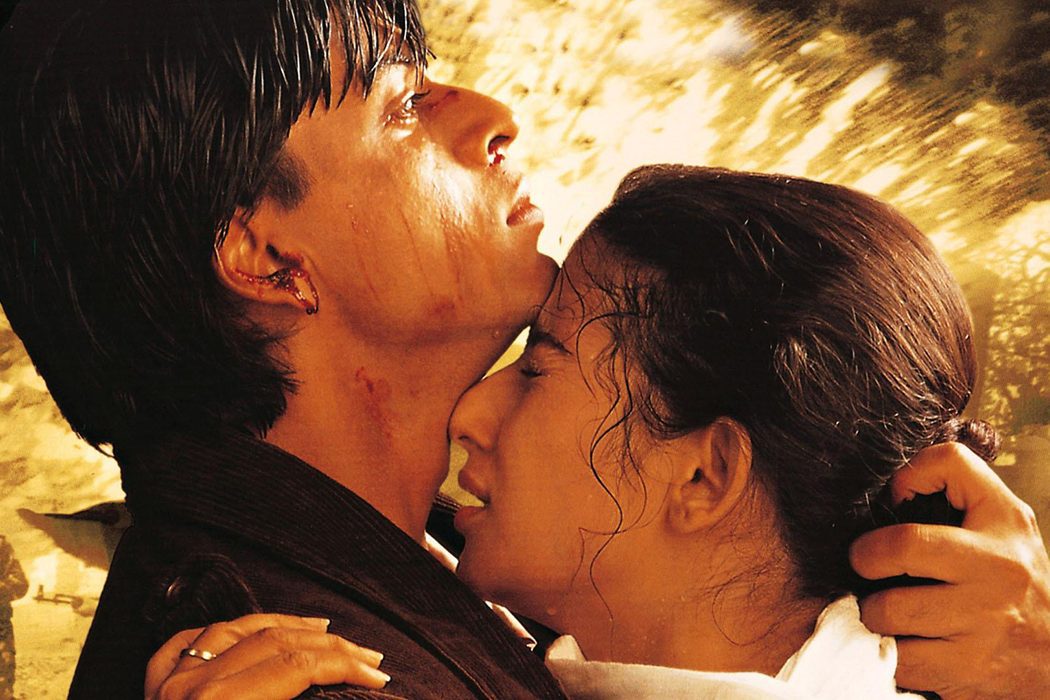It is crucial to shift the focus on how the cultural self of the North East has been formed in cinema from within the region itself and fathom the drama of transition therein.
In post-Independence India, the cultural policy vis-à-vis the Northeast emphasised upon the category of the “folk”, implying thereby that the indigenous cultures from the region were to be seen as archaic, stagnant and needed to preserved as such in their pristine purity. Further, such an approach fed upon nationalist perceptions of indigenous cultures as backward and often at odds with the rhetoric of Indian nationalism. On the other hand, given government policies granting political privileges on the basis of ethnic identity in the Northeast, the indigenous elite strove to uphold the “tribal identity” to the rest of the nation, setting the stage for a unique political and cultural identity.According to Daisy Hasan, “By being alternately denigrated and romanticised, the indigenous cultures of Northeast India lost much of their dynamism and political potential.”[1]With the perpetuation of reductive stereotypical categories of “backward”, “violent”, “underdeveloped” in national media and films, the loss has been aggravated. Consequently, there has been an acute sense of cultural distance between the Northeast and mainland India. Prasun Sonwalker writes:
Below the normative discourses of democracy, multiculturalism and nationalism, lies a discursive web of relations reified in the binary of “us” and “them”. It is based on material as well as psychological factors. The binary can be a key tool to explore and identify group perceptions and consciousness, and, in turn, help unravel banal journalism and explain the coverage and non-coverage of a society’s “other”.[2]
Mainstream Indian cinema, popular media, news posit the Northeast as the “other” more than often from patronising, or limited, perspectives. Bollywood movies such as Ek Pal (1986—Shillong and Jorhat), Kurban (1991—Shillong), Koyla (1997—Arunachal Pradesh), Daman (2001—Guwahati) did not deal with the Northeast beyond the idea of a serene and unknown landscape. Starring the biggest names in cinema at that point (Shahrukh Khan and Madhuri Dixit), the promotions for Koyla had harped upon the film’s USP in exploring a hitherto remote and almost inaccessible landscape within India. Directed by Kalpana Lajmi, Daman revolves around the life of a lower-caste woman (Raveena Tandon) who is tortured by her rapacious husband, a debauch landlord and her eventual evolution as “Durga” who is able to overcome “evil” as in her husband. While Tandon went on to win a National Award for her performance with songs such as “Gum Sum Nisha Aayi” by Bhupen Hazarika and Kavita Krishnamurthy receiving much attention, the Northeast received only token representation in the intricate designs of Tandon’s mekhala –chador and a bihu dance sequence in the climax of the movie.
Given government policies granting political privileges on the basis of ethnic identity in the North East, the Indigenous elite strove to uphold the ‘tribal identity’ to the rest of the nation, setting the stage for a unique political and cultural identity.
However, three years prior to Daman, Bollywood had showcased the “Northeast problem” through Mani Ratnam’s blockbuster movie Dil Se with superstars Shahrukh Khan and Manisha Koirala in lead roles. The clear-cut binary between Us/ Them was invested in a nationalist gaze, which sought to “understand” or dismiss “the Northeast problem” in the 1998 movie. The increase of insurgencies, bomb blasts, kidnappings and hijackings in the region in the late 1990s form the plot. The hero, Amar, is an honest, upright journalist and the son of an army officer who falls inadvertently in love with a suicide bomber, Meghna. Dil Se articulated a nationalist position, a “counter-insurgent gaze” at the Northeast. Sanjib Baruah writes, “Films like Dil Se and pictures in newspapers and magazines enable people to put together a mental picture of the Northeast and its people. The gaze of the Indian army patrol which is reinforced by films like Dil Se, gives meaning to what is fast becoming a racial divide.”[3]
Indeed, Dil Se projects the North East as a volatile place of unrest, with life engaged in a relentless combat with death. The unknown, furtive encounters in the North East are juxtaposed to the vibrancy of a metropolis like Delhi, which epitomises stability and security. The tension is played out in the contrasting characters of Preeti (Amar’s happy-go-lucky fiancé played by Preity Zinta) and the dark, passionate, unfathomable presence embodied in Amar’s love interest, Meghna. Amar is representative of the robust and kind north Indian male, who triumphs in love for the beloved and the nation with the final sacrifice of his life.
A similar image of the powerful and patriotic Indian male was portrayed in the 2005 Bollywood film Tango Charlie. Tarun Chauhan aka Tango Charlie (Bobby Deol) is a paramilitary man who transforms into a hardened man of war through his experiences of war and terror in the Northeast, in Andhra Pradesh, in Gujarat and also in Kashmir. Deol plays the role of a Border Security Force trooper who has been engaged to eradicate Bodo militants from Manipur. The reviews of the film harped on the “boldness” of the theme without acknowledging the perspective emerging within the Northeast or the misrepresentations therein. A review in The Hindu ascertained: “Two Cheers to Bollywood. It dares to enter where the national media shies away. It talks of the Northeast. It talks of Manipur. It talks of the Naxalites in Andhra Pradesh—parts of the country where a grenade attack or a mine blast killing a dozen is dismissed in a single paragraph by the print media, and almost completely ignored by the electronic media. Director Mani Shankar dares to embrace themes we thought Bollywood was incapable of even touching.”[4]
“Films like Dil Se and pictures in newspapers and magazines enable people to put together a mental picture of the Northeast and its people. The gaze of the Indian army patrol which is reinforced by films like Dil Se, gives meaning to what is fast becoming a racial divide.”
However, Pramila Rani Brahma, a Bodo woman legislator, had pointed out the misrepresentations since Bodos have not set up any bases in Manipur in their agitation for a separate state. Further, the projection of Bodos as inexorable arbitrators of bloodshed and violence was severely criticised and the movie was banned in Assam.[5] The struggle for an autonomous state for Bodos is a crucial issue within the political framework of Assam. In 2003, a Bodoland Territorial Council was created with forty-six elected members. Constituting of an autonomous administrative unit under the Sixth Schedule of the Constitution, Bodoland Territorial Area Districts (BTAD) comprises contiguous districts of Kokrajhar, Baksa, Udalguri, and Chirang and non-contiguous areas across Dhubri, Barpeta, Kamrup and Sonitpur. The struggle for an independent state is not a recent one but begin in the 1930s when Bodo delegates met the Simon Commission demanding an identity exclusive to them and beyond the perceived neo-imperial presence of Assamese culture. Tango Charlie does not take cognizance of these issues which demand a nuanced understanding of indigenous struggles and politics. Instead the movie perpetuates a two-dimensional image of the “tribal”—savage and cruel who is brought to task by the virile, civilised, male from mainstream India. Therefore, such misrepresentations of indigenous communities from the Northeast have led to an alienation from Bollywood.
In 2005, Bollywood made another attempt to foreground the “Northeast problem” with Dansh. Set in Mizoram, the film traces the evolution of the Mizo National Front. Mautam in Mizo denotes “bamboo death”. It refers to the flowering of a species of bamboo in an ecological cycle of forty-eight years or so across a wide area. The flowering of this tree is followed by a plague of black rats, which inevitably lead to famine. Mizo folklore abounds with references to the event and in 1958-59, this was predicted once again but the apathy of the then Assam government led to the loss of hundreds of lives. In order to provide relief across far-flung areas, the Mizo National Famine Front was formed and it later developed into the Mizo National Front.
The Mizo National Front was embroiled in a bitter separatist struggle with the Indian government until a peace accord was signed as early as in 1986, which gave Mizoram its independent and autonomous statehood. Dansh begins at the threshold of the peace accord. While peace has been signed on paper, the rape of Mizo women and the burning of villages by the Indian army, the tensions with the underground army are still fresh in the minds of the people. Film critic, Subhash K. Jha notes: “As must be evident, Dansh‘s story is to Bollywood what a bicycle is to a fish, and it’s annoying to see attempts at sprinkling some masala on it.”[6] Despite this allegation, the movie comes closer in negotiating with the angst of the North East. The Mizo leader, Matthew (Kay Kay Menon) is hopeful for a brighter and happier future. In the course of events, he invites an army doctor to his house for dinner where Matthew’s wife (and a fellow rebel), Maria (Sonali Kulkarni) realises that she recognises the voice of the doctor as the man who had repeatedly raped her when she had been captured by the army. Interestingly, she does not have a face to remember since she had been blindfolded during the interrogation. Maria demands vengeance – an eye for an eye – despite the doctor’s denials and the peace accord. What follows is a night of torment and confrontation, which attempts to portray the potential possibilities of the region but more so that of the three protagonists.
Such misrepresentations of indigenous communities from the Northeast have led to an alienation from Bollywood.
More than often, the cultural vision of the Northeast is jeopardised in the fractured relation with the rest of India. This relationship, which dictates the visual regime of Bollywood, has often been described as “a cultural gap, an economic gap, a psychological gap and an emotional gap.”[7] Bollywood films on the Northeast, which are far and apart, exemplify the imagined space of the region as articulated by the “rest of India”. The political and cultural agency of the Northeast itself is denied in the process.
Therefore, it is crucial to shift the focus on how the cultural self of the Northeast has been formed in cinema from within region itself and fathom the drama of transition therein.
—
[1] Hasan, Daisy. “Talking back to ‘Bollywood’: Hindi Commercial Cinema in North-East India” in Shakuntala Banaji Ed. South Asian Media Cultures: Audiences, Representations, Contexts , 29- 50, (London: Anthem Press, 2010), 32
[2] Sonwalkar, Prasun. “Banal Journalism” in S. Allan Ed. Journalism: Critical Issues (Maidenhead, UK: Open University Press, 2005), 261-273, 271
[3] Baruah, Sanjib. “A new politics of race: India and Its North East” in IIC Quarterly (New Delhi: India International Centre)Vol. 32 (2& 3) Winter, 2005, pp. 165-76), 167
[4] http://www.thehindu.com/fr/2005/04/01/stories/2005040102180200.htm Accessed 14 June, 2016
[5] http://www.indiaglitz.com/tango-charlie-banned-in-assam-hindi-news-14152.html Accessed 14 June, 2016
[6] http://www.rediff.com/movies/2005/sep/02dansh.htm Accessed June 14, 2016.
[7] Baruah, Sanjib. “A new politics of race: India and Its North East” in IIC Quarterly (New Delhi: India International Centre)Vol. 32 (2& 3) Winter, 2005, pp. 165-76), 166
















Ishu Lewis
Awesome Post.
thanks for this.
Aishi Ganguly
Felling happy to know that.
thank you so much for this article??
Amish Gumly
Wow! I’m really feel overwhelmed. I enjoyed reading your article. What a great blog you have here.
celewish
This is a nice post to read. Good Job!